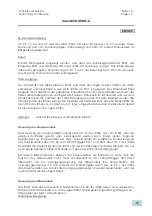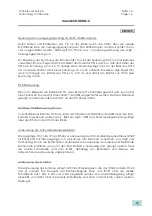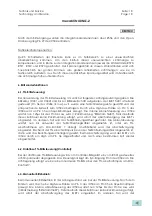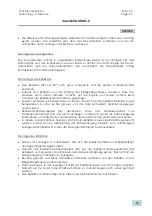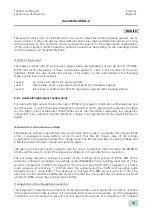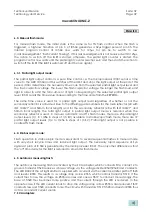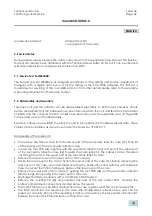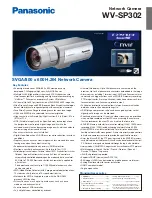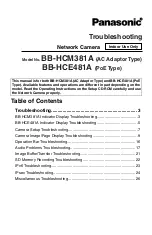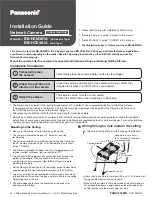
Technik und Service
Seite: 28
Technology and Service
Page: 28
mecablitz 40 MZ-2
ENGLISH
low via the transistor stage with Tr310 and Tr302. A pulse (high-low transition) is then sent from pin 49
of the microprocessor to pin 3 of the ASIC. This causes the trigger pulse generator in the ASIC to
generate a squarewave pulse with a width of 32µs at pin 35. This positive squarewave pulse passes
through R577 and causes transistor Tr509 to conduct. A positive pulse now passes through Tr509,
D504 and C509 to the gate of thyristor Ty401 and triggers it. C201 can now discharge itself through
Ty401, D701 (version 3: D406) and the primary winding 1-2 of the transformer T201. This induces a
high-voltage pulse in the secondary winding 3-4 of T201 and this pulse ignites the flash tube Rö001.
After Ty401 has been triggered, a negative pulse caused by the discharge of capacitor C202
reaches the flash tube via diode D201 and resistor R202. This increases the voltage across the flash
tube Rö001 at the moment of ignition, thus ensuring reliable ignition, also if the secondary reflector
is in use.
At this time, the IGBT Tr401 is conducting. The entire flash tube current now flows from the flash
capacitors C001 and C002 through the ignited flash tube Rö001, the diode D202, the switch S601,
Tr401 and resistor R401 back to the flash capacitor. The flash current circuit is thus closed.
The IGBT Tr401 is controlled by the ASIC via pin 36. If there is a low signal at pin 36, transistor Tr404 is
cut off. There is a positive voltage, via resistor R408, at the bases of Tr402 and Tr403, causing Tr402 to
conduct and Tr403 to cut off. A positive voltage passes through the collector-emitter path of Tr402
and through resistor R404 to the gate of Tr401, causing it to conduct. In the idle state, the IGBT Tr401
is always conducting. It is cut off (high signal at pin 36) for a specific time, in order to quench the
flash tube, only after a flash has been triggered and is then switched on again. The duration of the
quenching period depends on the flash mode: 10ms in manual mode, longer than 10ms in
automatic, TTL and cordless TTL modes, and 4ms in stroboscopic mode. In addition, in cordless TTL
mode, the IGBT is switched on and off rapidly during the flash (via pin 36 of the ASIC) in order to
modulate the emitted light.
Since the ignition timing of the flash tubes varies greatly (depending on the temperature and the
flash capacitor voltage), it is important to synchronize all internal operations of the ASIC (partial
light output control, automatic light output control, etc.) with the flash tube current. For this
purpose, there is a 10mOhm measuring resistor R401 connected in series in the negative line of the
flash capacitors. When the flash tube ignites, and the flash current flows, a negative voltage drop is
generated across R401. This causes Tr513 to conduct and to connect pin 34 of the ASIC to low. This
low signal is used to synchronize the internal operations of the ASIC.
In cordless TTL flash mode, the emitted light is modulated by the ASIC, which switches the IGBT Tr401
on and off rapidly. In order to ensure that each individual flash is triggered correctly, forced ignition
must be provided, depending on the state of the IGBT. When the IGBT is cut off, the flash tube
current flows away via capacitor C702 (version 3: C402), resistor R703 (version 3: R412) and diode
D704 (version 3: D409). There is thus a voltage of approximately 300 V on C702 (version 3: C402). The
ignition capacitors C201 and C601 are charged rapidly via resistor R704 (version 3: R415) and diode
D705 (version 3: D410). There is a voltage of approximately 27V at diode D704 (version 3: D409). This
voltage charges C701 (version 3: C401) via diode D703 (version 3: D408). When the IGBT Tr401 is
again switched on, the charge on C701 (version 3: C401) is reversed via diode D702 (version 3:
D407) and a negative pulse passes through resistor R701 (version 3: R415) to the cathode of Ty401.
This makes the cathode more negative than the gate and Ty401 is triggered. Resistor R702 (version
3: R411) is provided to discharge C701 (version 3: C401) in normal flash mode, thus ensuring that no
forced ignition is possible after a certain period.

